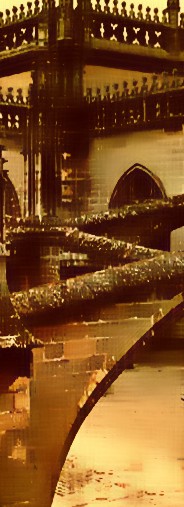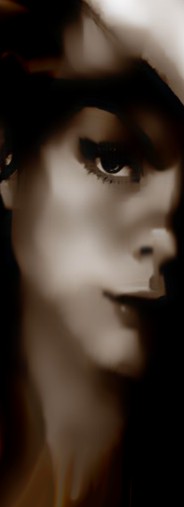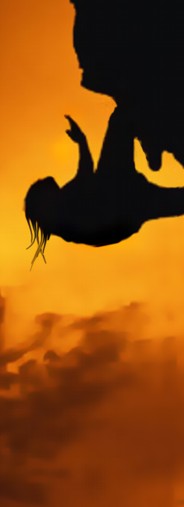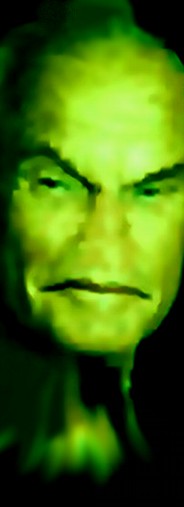Things are only impossible until they're not.
I remember watching a Star Trek movie where Captain Jean-Luc Picard was discussing economics in the 21st century. The human race by that stage had done away with the concept of currency, and all property was either shared or ubiquitous thanks to technology such as replicators. Even at the time of watching the film, the demise of capitalism seemed incredible (if not impossible) but... perhaps there's a kernel of truth in science fiction. Perhaps technology can help to even things out, if only just a little.Jean-Luc Picard, 'Star Trek: The Next Generation'

Jean-Luc Picard (from Wikia, published under Fair Use Provisions)
So what is an eReader? It's basically a handheld device capable of digitally displaying text, but it's not a notebook computer, iPod Touch or netbook. Now most people agree that one of the biggest problems of reading digitally-displayed text has been the glare (and resulting headaches caused by reading from an illuminated screen). Fortunately this problem has been resolved by the advent of electronic ink.
E-ink has been incorporated into many eReaders such as the Sony Reader , the iLiad , the BeBook , the Amazon Kindle, and Barnes & Noble's nook. It's quite amazing technology. Basically electronic ink is comprised of millions of wee microcapsules, each about the diameter of a human hair. Each microcapsule contains positively charged white particles and negatively charged black particles that float about in a clear fluid.
When a negative electric field is applied, the black particles are pulled to the bottom of the microcapsule and as a result, that tiny area will appear white to the reader (or black if the capsule is positively charged). By controlling each miniscule area, E-ink can recreate the look of a printed page.

Nook and Kindle by evilgenius Creative Commons 2010 Non-commercial Licence
There are obvious benefits to this method. E-ink can be read in bright sunlight and does not place any more strain on the eyes that a normal book. Also, because it's all digital, text can be resized at the click of a button. Add to that other features such as electronic bookmarking of pages, the ability to share books by wirelessly transferring them from one device to another and the fact that each device can literally contain thousands of books, eReaders are quite a compelling alternative to printed books. (For more info on eBook readers, head over to http://www.digital-book-readers.com/).
The price of eReaders is coming down, largely due to competition. On the day Barnes & Noble's nook was released in the US for $259 (USD), Amazon dropped the price of their eReader (the Kindle) to the same price. And this year, more devices are coming out on the international stage. This in turn will lead more and more publishers and writers to consider eReaders as a viable option for their content.
In fact, I sense something of a revolution in the wind, as writers discover they are not quite so dependent upon traditional publishers as a means to distribute content. Whilst this causes a conundrum for today's publishing houses, it means that readers of books will be spoilt for choice. In fact, the problem facing readers will not be accessing content, but finding books to their liking. I can see the rise of supporting mechanisms to make the selection process easier - for example, social networking sites such as such as Good Reads, Shelfari, LibraryThing, WeRead, ReadWhale, JuiceSpot and others. (For a more comprehensive list, head over to 100 Awesome Social Sites for Bookworms at Online College).
What fascinates me about all this is how the lines between consumer and producer are blurring. People who always wanted to write a book have one less excuse - publishing is not the great obstacle it once was. Anyone can publish a book.
I look back on my teaching days and think of all those brilliant minds I encountered and it fills me with great optimism. I taught so many budding writers but few considered going down that road due to the torturous path of getting things to print. Now, schools have the option of moving kids into this space. In fact, it's not really an option - it's an obligation.

Of course, the future Jean-Luc inhabits is a long way off, but that's the thing about technology - it sometimes takes the stuff of fantasy and turns it into reality. Only time will tell.
On a related note, last week I was contacted by Susan Crealock of Online Novels seeking my permission to include my second book Into the Endless on her site. Online Novels is an amazing collection of free novels, most of which can be downloaded from the web and read on eReaders (as well as on the humble computer). My inclusion on the site highlights the growing number of avenues available to writers who just want to see their work out where it can be read.

Of course, the future Jean-Luc inhabits is a long way off, but that's the thing about technology - it sometimes takes the stuff of fantasy and turns it into reality. Only time will tell.


















































No comments:
Post a Comment